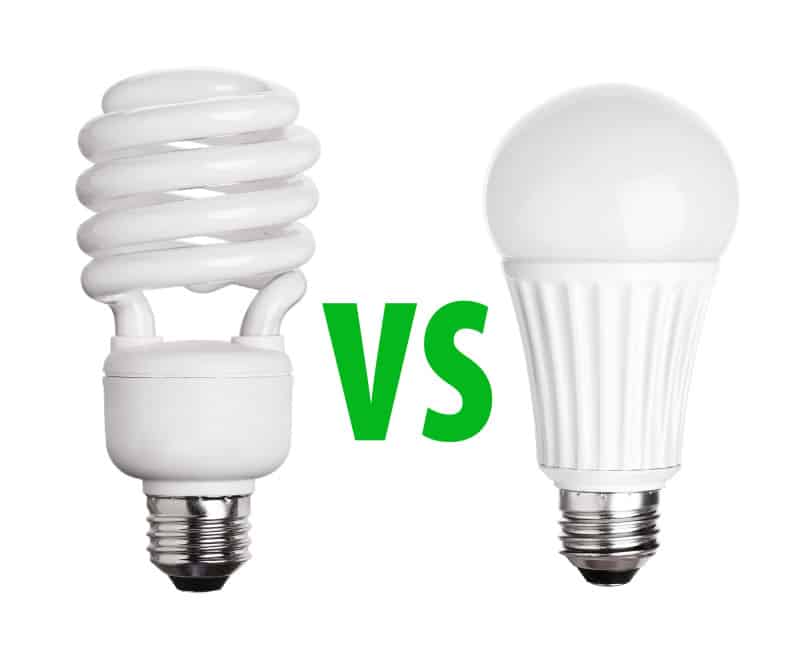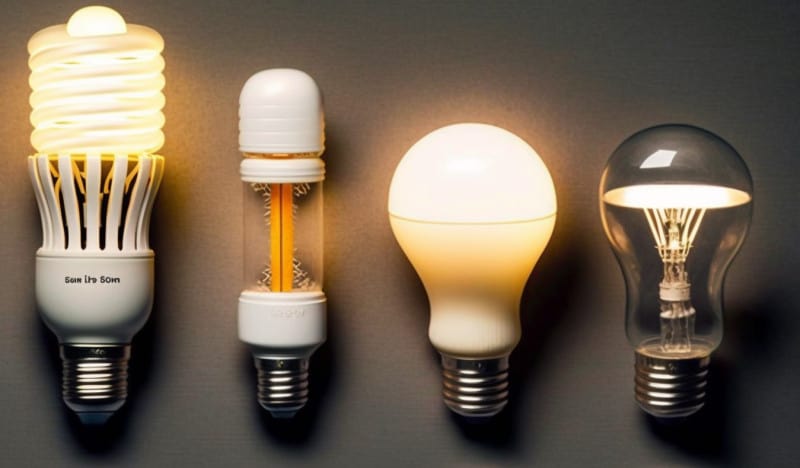When it comes to lighting, CFL and LED bulbs have become popular choices due to their energy efficiency and cost-effectiveness compared to traditional incandescent bulbs.
Both types offer numerous benefits, including lower energy usage and installation costs. However, one key factor that sets them apart is their lifespan. So which has the longer lifespan?
LEDs have a longer lifespan than CFLs. CFLs typically last around 8,000-10,000 hours, while LEDs can last up to 50,000 hours or more. LEDs use solid-state technology, which is more durable and energy-efficient, leading to an extended lifespan compared to CFLs, which use gas and a filament.
Let’s delve into the details and understand why.
Overview of CFL and LED Lighting
When it comes to lighting, CFL and LED bulbs have been the go-to choices for many people in recent years.
Both offer a range of benefits when compared to traditional incandescent bulbs.
One key factor is energy usage; both CFL and LED bulbs require significantly less energy than their incandescent counterparts, making them more economical in the long run.
Installation costs can also be lower for both types of lighting when compared to traditional bulbs.
CFLs contain a gas-filled tube that produces an electric arc when electricity passes through it, while LEDs are composed of multiple tiny light-emitting diodes on a circuit board.
The lifespan of each type of bulb varies depending on factors such as wattage and usage patterns, with LEDs generally having a longer lifespan than CFLs.
LEDs are also less prone to flickering or dimming due to aging components, providing a more consistent light over time.
Overall, both CFL and LED bulbs are cost effective options that offer superior energy efficiency compared to traditional incandescent bulbs.
While LED lights typically have longer lifespans than CFLs, both types can provide quality lighting solutions for your home or business needs.
Comparing Efficiency and Lumens
The debate between CFL and LED lighting is a contentious one.
But when it comes to lifespan, there’s no comparison – LED lights are the clear winner. LEDs can last over 25 times longer than CFL bulbs, which means that if you’re looking for a long-term solution, LED is the way to go.
Not only do they last longer; but they also use significantly less energy, making them more cost-effective in the long run.
What’s more, LEDs have an even greater environmental impact than their traditional counterparts.
By using fewer watts of electricity, they reduce their energy footprints significantly.
This means less reliance on fossil fuels and fewer emissions of harmful gasses into our atmosphere.
In addition to reducing your carbon footprint, LED lights also provide higher quality light with greater intensity and brilliance than CFL bulbs.
LED lighting offers superior longevity and efficiency without sacrificing quality or brightness – it’s the clear choice for anyone looking for an environmentally friendly lighting solution that will last for years to come.
With so many advantages over traditional light sources, you’d be hard pressed to find a better option when it comes to your home or business’s lighting needs!
Examining The Lifespan of CFL vs LED
Having discussed the efficiency and lumens of CFL vs LED, let’s now look at the lifespan of these two lighting sources.
Despite its energy-saving promise, the CFL is not a good choice in terms of longevity.
With an average lifespan of 8,000 hours, it’s relatively short compared to LEDs which can last up to 50,000 hours.
That means you’d have to replace your CFL bulbs 6 times if you wanted its equivalent in LED lifespan!
In addition to a much longer life span, LED bulbs also come with significantly lower disposal concerns since many communities don’t accept them for recycling due to their hazardous materials content.
This puts less strain on our environment and reduces the need for new resources when replacing them with newer models.
LEDs are clearly ahead in this comparison when it comes to their environmental impact and having a longer lasting bulb that can be used for years with minimal maintenance or replacement costs.
These benefits make choosing LED over CFL an easy decision for anyone looking for energy-efficient lighting solutions that also help reduce their carbon footprint.
Evaluating Cost-Effectiveness
I’ve been looking into CFL and LED bulbs and their respective lifespans.
As it turns out, when it comes to how long they last, LEDs have a clear advantage.
With an average lifespan of 25,000 hours, compared to 8,000 for CFLs, LEDs are considerably longer-lasting.
This means that if you’re looking for a bulb that won’t need replacing too often, then LEDs are the way to go.
But there’s more to consider than just the lifespan of these bulbs. When evaluating cost-effectiveness, we also need to take energy costs and environmental impact into account.
And in this regard, LED lights shine even brighter than before. LED lights are known for consuming less energy than other types of lightbulbs and produce fewer emissions – making them the more eco-friendly option as well as the cost-effective one!
So when it comes to choosing between CFLs and LEDs, it’s easy to see which is the better option: LEDs provide greater longevity at lower costs while also being much more environmentally friendly than their counterparts.
By opting for LED bulbs instead of CFLs, you can enjoy peace of mind knowing your home is lit up in an efficient and sustainable way.
Making The Right Choice for Your Needs
It’s easy to get overwhelmed when trying to decide between different types of lighting, especially when you consider the impact your choice could have on energy efficiency and the environment.
I remember when I was in the same situation myself, debating between CFLs and LEDs.
It felt like a classic “Head vs. Heart” situation – should I go with the more economical option (CFLs) or invest in the more effective one (LEDs)?
Ultimately, it all came down to weighing up my needs and making an informed decision.
If you’re looking for energy efficiency, LED lights are your best bet.
They use substantially less electricity than CFLs do and can last up to five times longer.
Plus, they don’t contain mercury like fluorescent bulbs do so there are fewer environmental ramifications if they ever need disposing of.
On top of that, LED lights come in a variety of shapes, sizes and colors so you can get creative with your lighting setup!
When it comes to lifespan, LEDs take the cake – but that doesn’t mean everyone should rush out and buy them tomorrow.
Depending on how often you use your lights and what type of environment they’re exposed to, CFL bulbs might be a better fit for your needs as they typically have a much lower upfront cost than LEDs do.
Ultimately it all comes down to what works best for you – taking into account both cost and environmental impact – which is why it pays off to make an informed decision before investing in new lighting fixtures.
Conclusion
It’s clear that when it comes to comparing CFL vs LED lighting, there’s no single answer that can be applied to everyone.
After all, we all have different needs and budgets.
So, if you’re looking for a longer lifespan and don’t mind spending more money upfront, then LED lights might be the way to go.
But if you’re on a tight budget and need something that won’t break the bank, then CFLs might be your best bet.





